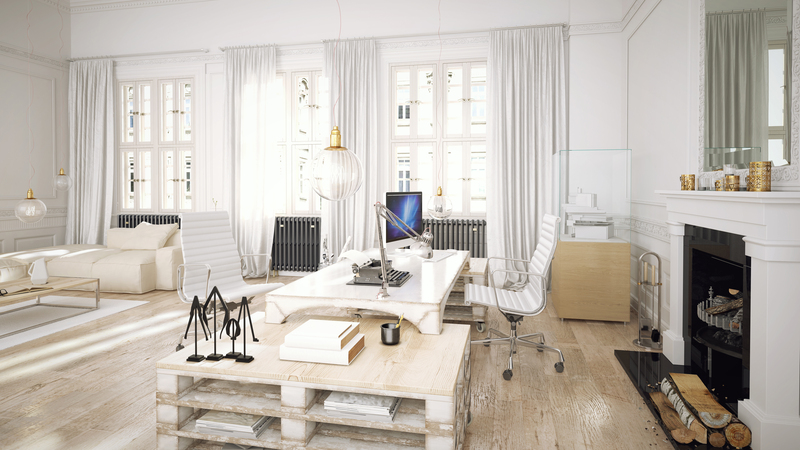Effortless Strategies for Maintaining a Clutter-Free Space
Maintaining a clutter-free space may seem like a daunting task, especially in today's fast-paced world where we constantly acquire new items. However, with the right mindset and a few practical strategies, keeping your home or office organized can be both simple and enjoyable. This comprehensive guide outlines effortless methods to help you create and maintain a tidy environment without constant stress or overwhelm.
Why Is a Clutter-Free Environment Important?
Living in an organized, clutter-free space is not just about aesthetics. It has significant impacts on your mental and physical well-being. Here's why you should strive to maintain a tidy environment:
- Reduced Stress and Anxiety: Clutter can cause feelings of overwhelm and anxiety. A clear space promotes a calm mind.
- Increased Productivity: An organized workspace can improve focus and efficiency, helping you accomplish tasks faster.
- Healthier Living: Less clutter means fewer places for dust and allergens to accumulate, contributing to a healthier home.
- Saves Time: No more wasting valuable minutes searching for misplaced items.
- Creates a Welcoming Environment: You'll feel proud to invite guests into your clean, organized home.

Top Effortless Strategies for Maintaining a Clutter-Free Space
Let's dive into actionable, easy-to-follow approaches that will help you achieve a tidy and organized environment--with minimal ongoing effort!
1. Embrace the "One-In, One-Out" Rule
This simple principle is a game-changer for clutter prevention:
- Every time you bring a new item into your home--be it clothing, gadget, or decor--pledge to remove something you no longer need.
- This keeps your possessions in check, ensuring your space never becomes overwhelmed with unnecessary items.
- Tip: Have a donation box handy for items you wish to part with.
2. Designate a Place for Everything
Assign a dedicated spot to each item in your house:
- This makes tidying up fast and effortless--just return things to their homes.
- Use clear labels, especially for shared spaces, so everyone knows where items belong.
- Bonus: When something doesn't have a home, consider if you truly need it.
3. Implement Daily 5-Minute Resets
Rather than letting clutter build up, take five minutes daily to reset your space. This ongoing habit ensures maintenance never becomes overwhelming.
- Set a timer for 5 minutes each day--morning or evening works well.
- Quickly pick up items, wipe surfaces, and restore order.
- Create a habit by linking it with another daily activity, like after dinner or before bed.
4. Master the Art of Decluttering Regularly
Even with the best *clutter prevention* strategies, possessions tend to accumulate over time. Committing to routine decluttering sessions keeps things in check.
- Schedule a monthly or quarterly declutter--set aside an hour to quickly evaluate what you use and what you don't.
- For faster results, focus on one category (clothing, books, kitchen gadgets) or one room at a time.
- Donate, recycle, or toss anything that no longer serves you.
5. Use Smart Storage Solutions
Organization is easier when you optimize your storage:
- Use baskets, bins, and drawer dividers to group similar items together.
- Adopt vertical storage--like wall shelves or over-the-door organizers--to maximize space.
- Choose multi-functional furniture with built-in storage.
6. Avoid the "Just in Case" Trap
It's tempting to hold on to things for hypothetical future use. However, this mindset breeds clutter.
- Be honest: If you haven't used it in the last year, you likely never will.
- Adopt the 20/20 rule for non-sentimental items: If you can replace it for under $20 and in under 20 minutes, let it go.
7. Cultivate Mindful Shopping Habits
One of the easiest long-term methods for maintaining a clutter-free home is to prevent clutter from entering in the first place:
- Avoid impulse purchases by waiting 24 hours before buying non-essentials.
- Prioritize quality over quantity--a well-made item is more likely to have a permanent place in your space.
- Ask yourself if the new item truly adds value to your life.
8. Make It a Family Affair
Maintaining a tidy area is easier when everyone pitches in. Get household members involved by:
- Assigning age-appropriate organizing tasks to children.
- Setting group clean-up times, turning chores into a fun, shared activity.
- Celebrating your collective success--a clutter-free area benefits everyone!
Room-by-Room Approaches to Declutter Effortlessly
Each part of your home presents unique challenges and opportunities. Here's how to keep every room organized with minimal effort.
Entryway
- Use hooks, trays, and shoe racks for everyday essentials.
- Place a small basket for mail and keys near the door.
- Limit what you store in this space to only what you use regularly.
Living Room
- Incorporate multifunctional furniture like storage ottomans or coffee tables with drawers.
- Keep surfaces clear--use baskets for remote controls and magazines.
- Rotate decor items seasonally to prevent overcrowding.
Kitchen
- Group similar items together--spices, baking supplies, utensils--for easier access.
- Purge expired food and duplicates regularly to free up cabinet space.
- Employ drawer organizers and shelf risers to maximize storage potential.
Bedroom
- Keep only current-season clothing in your main closet; store the rest elsewhere.
- Declutter nightstands and dressers--limit them to essential items.
- Use under-bed storage bins for off-season blankets or shoes.
Bathroom
- Limit personal care items to one of each type. Toss expired products monthly.
- Add drawer dividers or small bins to corral toiletries by category.
- Use wall-mounted shelves or over-the-door hooks for towels and accessories.
Home Office
- Digitize paperwork and create simple filing systems for what must be kept.
- Keep only often-used office supplies at arm's reach--store extras elsewhere.
- Take five minutes at the end of each workday to clear your desk.
Maintaining a Clutter-Free Space with Technology
Use modern tools to help you effortlessly declutter and stay organized:
- Utilize task management apps to set reminders for cleaning and decluttering tasks.
- Embrace cloud storage to eliminate physical paperwork and manuals.
- Set up smart home devices to automate routines--like robot vacuums for daily floor cleaning.
Small Habits, Big Results: Daily Rituals for a Tidy Home
- Make the Bed: Instantly makes any room look neater.
- Sort Mail Daily: Prevents paperwork from piling up.
- Do a Quick Sweep: Before leaving any room, take a moment to return stray items to their place.
- Manage Laundry: Fold and put away laundry as soon as it's dry to avoid clothes clutter.
- Ten-Minute Tidy: Involve the whole family for a whirlwind cleanup to reset the house at the end of the day.
Common Clutter Hotspots--And How to Conquer Them
Certain areas always attract disorganization. Here are a few clutter magnets and how to keep them in check:
- Kitchen Countertops: Only keep daily-use appliances and items. Use trays to group smaller items.
- Couch or Coffee Table: Limit how many decorative items are displayed, ensure coasters and remotes have homes, and clear surfaces daily.
- Closets: Organize by season and use storage bins for lesser-used items.
- Entry Tables: Place bins or baskets for keys, change, and mail and clean them out weekly.
How to Stay Motivated in Your Clutter-Free Journey
Motivation can wane over time, but celebrating small victories and tracking your progress can help:
- Document Your Progress: Take "before and after" photos.
- Reward Yourself: Treat yourself after each decluttering session, no matter the size.
- Enlist Support: Find a declutter buddy or join an online community for accountability and inspiration.

Frequently Asked Questions: Effortless Clutter-Free Living
How often should I declutter my home?
Ideally, small daily habits paired with monthly check-ins help maintain an organized, clutter-free home.
What should I do with items I'm unsure about?
If you're on the fence, place them in a "maybe" box. If you don't reach for those items within a few months, it's safe to let them go.
How do I get my family or roommates on board?
Communication, clear expectations, and shared routines can make it easier for everyone to contribute to keeping the space tidy.
Conclusion: Enjoy Your Inviting, Organized Space
With these effortless strategies for maintaining a clutter-free space, organization becomes less of a chore and more of a positive habit. By incorporating small, consistent actions and fostering a mindful approach to what enters your home, you can transform your environment into a peaceful, productive, and welcoming place. Begin today, and enjoy the many benefits of a clutter-free lifestyle!